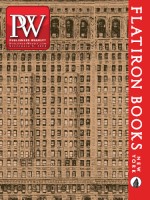Multinational publishers know that regional book editions increase their options for selling titles, especially in the education segment. The goal is to have students and readers engage more deeply with the text as a result of the more relevant approach to how the book is presented.
In many markets, the start of this regionalization is already in play, but it’s often limited to book covers. John Currie, global business director of CTPS, a Hong Kong-based export printer with clients in education, SSTM, and reference segments, says, “With 100%-variable digital printing, it is only a matter of time before publishers turn to text-page customization to generate individualized printed textbooks.” Currie’s SSTM and trade publishing clients already print on demand and take advantage of fulfillment and logistical support provided by CTPS within the Asia-Pacific region. “Publishers that understand—and quickly seize—the opportunities in complementing e-learning initiatives with customized textbooks, or e-commerce programs with print-on-demand, stand to reap the advantages,” he adds.
In Currie’s view, publishers that adopt title differentiation using segmentation, personalization, and other techniques have a competitive edge in the book market, whether they’re operating in the K-12, higher education, or professional segment. “Such workflow is getting simpler and smarter, as digital printing technologies and solutions advance and adapt to current publishing needs. Now publishers can supply basic design concepts and a content database and let the HP Exstream real-time document composition system, for instance, merge the two to produce on-demand and customized products,” says Currie, pointing out that this process requires digitized content.
Regional manufacturing with distributed print solutions also allows for low-volume book production closer to the point of consumption, reducing inventory and shipping costs, while shorter transit times allow books to get to market more quickly. In Australia, Vicki Bzovy, Pearson’s Asia-Pacific production director, “has identified probably 90% of [Pearson] titles that could be printed digitally if we have the digital files; the print quantity is low enough—500 copies or less—and the price is right. There are adequate digital printing technologies around now that will provide the required quality for most of our products. So it is a matter of getting the right price for the right quality for a particular title.”
Instead of hunting for the lowest printing cost per unit, publishers are starting to factor in the total cost per book, which covers the whole supply chain, including inventory, distribution, and warehousing, observes Currie. “Publishers are spending more time evaluating digital printing as a comprehensive solution that offers reduced inventory and more efficient supply chain, with short-run and on-demand advantages. The financial benefits are immense when you consider the costs saved in regional shipping and distribution. Throw in a lower carbon footprint and near-100% recyclable consumables with digital printing, and you have a cost-effective and greener win-win solution.” CTPS’s digital printing floor runs on two HP ink-jet Web presses (T300 and T410) and three HP Indigo presses (W7250, 7500, and 10000), with a soon-to-be-launched Web-based solutions platform that includes auto-ordering, stock replenishment, and track-and-trace functions.
Publishers should also look at the life cycle of a title—pre-life, midlife, end of life—to see where digital printing can be applied to generate the most impact and best margins. Digital printing can be used at any stage of a book’s life—for producing limited quantities of bound galleys for book events or for test marketing prior to rollout (pre-life); for publishing promotional freebies for market launch (new life); for generating customized versions of popular and proven titles (midlife); or for reviving out-of-print titles (rest of life) with on-demand printing. The backlist is often a good starting point to try digital printing, enabling new revenue creation by repurposing old content.
Given that most in the publishing industry have more experience with offset printing processes than with digital, however, knowledge of the advantages of 100%-variable digital printing is not enough to effect a shift in mind-set. Executive buy-in starts with an internal analysis of the cash value currently locked up in the warehouse and its potential write-off. The issue of total cost vs. lowest printing cost per copy (which many production directors swear by) must be addressed. The next step is to determine how much of the list (front and back) is digitized and catalogued, and therefore how much is ready for digital printing. Armed with that information, any publisher can start to unlock the benefits of digital printing for its titles (and its bottom line).
This educational series is brought to you by Hewlett-Packard.



 Volume 261
Issue 36
09/08/2014
Volume 261
Issue 36
09/08/2014





